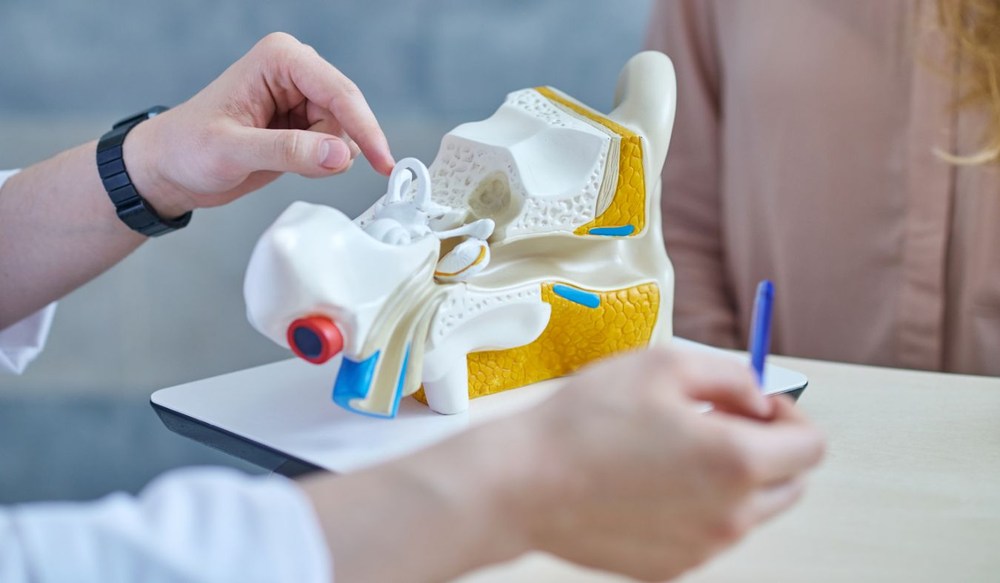How to Create a Hearing-Friendly Home Environment
Your home should feel comfortable for conversation, but hearing loss can

By: admin | April 30, 2024
Spring has sprung, and the delight of outdoor activities you may have missed during the colder months is back. The birds are singing, leaves are swaying and children’s laughter fills the parks – these are the sounds that make this season so special. If you use hearing aids, these sounds may need a bit of tweaking in your device’s settings. Here’s how you can adjust your hearing aids for outdoor activities and fully enjoy the springtime sounds.
Switching from one environment to another with your hearing aids can seem a little daunting at first. However, understanding how your devices react in different settings is the first step towards seamless sound experiences.
You might find it tricky to hold a conversation in a bustling park or cafe due to background noise. Luckily, many modern hearing aids have features that cut down on background noise and amplify speech sounds. Similarly, wind can cause distortion or discomfort when you’re outside. Some hearing aids come with wind noise reduction technology. With these insights and guidance from your hearing professional, you can adapt to various environments with ease and confidence.
Changes in weather, like shifts in temperature and humidity levels, can affect your hearing aids. Warmer weather may increase humidity, leading to condensation build-up within your hearing aids and potentially damaging their internal components. Conversely, colder temperatures may cause battery life to decrease more rapidly than usual.
By keeping an eye on these changes and taking appropriate steps, like using a dehumidifier during humid months, you can protect your hearing aids. Rest assured, no matter the season or weather, your hearing care provider is there to guide you through these changes and provide solutions tailored specifically for you.
With the arrival of spring, you may notice an uptick in ambient noise levels. The sound of kids playing, birds singing and traffic humming can all contribute to this increase. This rise in noise can affect how your hearing aids function. Adjusting your device settings to handle these changes effectively is key. Tweaking the volume levels or activating noise reduction features will help you enjoy springtime without compromising on sound clarity.
After understanding the factors that influence your hearing aid performance, it’s important to recognize when an adjustment might be necessary.
For instance, if you’re finding it difficult to hear conversations in noisy environments or if the sounds around you seem distorted or unclear, it might be time for a tweak in your device settings. Similarly, if your hearing aids are whistling or making unusual noises, this could indicate a need for adjustment. Always consult with your hearing specialist for professional advice and assistance when in doubt.
Regular visits to your hearing specialist are as important as a tune-up for your car. They keep everything running smoothly and help prevent small issues from becoming bigger problems down the line. Regular check-ups can ensure you’re not just part of the statistic but actively taking steps towards better hearing health.
There are simple adjustments you can make at home to improve your hearing aid experience. Adjust the volume levels to suit different environments, experiment with various settings on your hearing aids and clean your devices regularly using a soft dry cloth. These small steps can significantly impact how well you hear and interact with the world around you!
Sometimes, despite your best efforts, you may find that your hearing aids need more than just a simple at-home adjustment. This is where the expertise of your hearing health professional comes in handy. They can make advanced adjustments that can drastically improve your hearing aid performance.
If you experience persistent whistling or buzzing from your devices, decreased sound quality or volume or physical discomfort while wearing your hearing aids, it’s time to seek professional help. They can ensure that you’re getting the most out of your hearing aids and continue enjoying life’s beautiful sounds without any hindrance.
Spring is a time for renewal, and that includes giving your hearing aids some TLC! Just like you clean out your house and freshen things up, regular maintenance ensures your hearing aids function optimally throughout the year. Here’s why spring cleaning your hearing aids is important:
By following these simple steps, you can keep your hearing aids functioning optimally throughout the spring and enjoy all the sounds of the season – from birds chirping to the gentle hum of a spring breeze.
Spring is a time to head outside and soak up the sunshine, fresh air, and the chirping of birds. But for people with hearing aids, venturing outdoors can also mean exposing their devices to things that might mess them up.
The spring weather itself can be a challenge. Spring showers and higher humidity can create moisture buildup inside your hearing aids, which can damage the delicate parts and make them stop working right. Warmer weather also means more dust and pollen floating around, which can clog the filters and make it harder to hear clearly. And if you’re getting active outdoors, sweat can damage your hearing aids and even grow bacteria on them.
Don’t let these worries keep you cooped up inside! Here’s how some simple gear can keep your hearing aids safe and working well all spring long.
Sweatbands made from a material that wicks away moisture can be worn around your head and hearing aids. This absorbs sweat and keeps your devices dry. Tiny foam covers called windshields can be placed over the microphone openings of your hearing aids. These help block out wind noise while still letting you hear the sounds of spring. Finally, disposable ear gear covers create a barrier against dust, dirt and moisture, giving your hearing aids an extra layer of protection during your outdoor adventures.
By using these simple accessories, you can keep your hearing aids working their best and enjoy all the sounds of spring, from birds singing to the gentle breeze. Remember, your hearing health professional can give you personalized advice on caring for your hearing aids and choosing the right protective gear for your needs and lifestyle.
With a few smart practices, you can ensure your devices keep up with your outdoor adventures. Always carry spare batteries, keep your batteries at room temperature and turn off your hearing aids when not in use to conserve battery life. With these handy tips, you’re all set for extended stays outdoors, enjoying the sounds of spring without worry!
As springtime brings a myriad of outdoor activities, assistive listening devices (ALDs) can come in handy. ALDs are designed to improve your hearing ability in specific situations, making them a great addition to your springtime auditory toolkit. They work by reducing background noise and focusing on the sound you want to hear, enhancing the clarity of sounds and making these experiences more enjoyable for you.
Adjusting your hearing aids to suit different situations is key to enjoying the best auditory experience. But how do you ensure that these adjustments are done correctly? It all starts with understanding your device and its features.
Hearing aids today come equipped with advanced technology that allows for precise adjustments. By learning about these features and how they work, you can make informed decisions about adjusting your hearing aids for optimal performance.
However, it’s not just about understanding your device – it’s also about knowing when to seek professional help. While minor adjustments can often be made at home, more complex issues require the expertise of a hearing health professional. They can provide advanced adjustments and fine-tuning that ensure your hearing aids are working at their best.
In addition to this, regular cleaning and maintenance are vital for their performance and longevity. By following these steps, you can ensure that you’re getting the most out of your devices – allowing you to fully enjoy all the sounds that spring has to offer!
Adjusting your hearing aids for springtime outdoor activities can significantly enhance your enjoyment of the season’s vibrant sounds. It’s a process that involves understanding your device, making necessary adjustments and maintaining them for optimal performance. However, you’re not alone in this.
At Beltone Hearing Care Centre, our team of dedicated hearing health professionals is ready to assist you in fine-tuning your devices for the best auditory experience this spring. Whether you need help with advanced adjustments or simply want some advice on maintaining your hearing aids, we’re here to support you.
If you are near any of our locations in British Columbia listed below, feel free to through our website!
Spring is a time of renewal and rejuvenation; let it also be a time for enhancing your auditory experiences with properly adjusted hearing aids. Contact Beltone Hearing Care Centre today and let’s get your auditory system back on the right track!
Tags: assistive listening devices, hearing aid styles, hearing aid technology

Your home should feel comfortable for conversation, but hearing loss can
By: admin | November 17, 2025

Your hearing test results do much more than just tell you whether you have
By: admin | September 24, 2025

When hearing becomes difficult, the right professional makes all the
By: admin | May 23, 2025